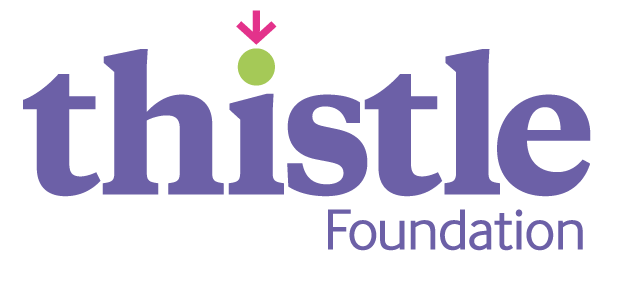Anna’s story
Then in 2014, my health began to fail. It was a few symptoms at first but got progressively worse. The first was a driving pain that felt like I was being stabbed in my knees. It got so bad and the pain so intense that I ended up developing a limp.
Then I got a really bad virus. I thought I was just run down, but I couldn’t recover. I was knocked off my feet, in bed with all the flu symptoms, and it wouldn’t go. I had really bad light sensitivity and migraines. I had to keep all my curtains closed as the smallest amount of light would mean intense pain. I was always very fatigued, having to sleep almost the entire day, and any time I was awake I was in so much pain. My body didn’t know what was going on.
I went to the GP and they said it was the flu virus and it’d pass. But it had been almost eight weeks. The chronic fatigue and the level of unexplainable pain remained. My body was on fire on the inside. I couldn’t explain why I went from being relatively healthy to suddenly not being able to do anything. I would sleep most of the day, then would try to get myself ready, but everything became really hard. Brushing my hair, putting socks on, getting dressed – I couldn’t keep my arms up for long enough.
“I’ve always been a very active and very driven person. Before my diagnosis, I was working full time with my parents’ charity, helping women out of domestic violence. ”

I knew that from the inside my body was changing.
I couldn’t work, I couldn’t socialise, and I had no way to get a handle on the pain. By this point, I’d had two years of unexplainable symptoms and I was pretty much bedbound.
Despite going back and forth with my GP, it wasn’t until I came across an article online that spoke about fibromyalgia that I thought I might have found some answers. In 2016 I was finally diagnosed with ME/Chronic Fatigue Syndrome and fibromyalgia, as well as IBS, food intolerances and sleeping issues.
I started looking for help for how to manage the symptoms and just get by on a daily basis. That’s how I came across Thistle. I couldn’t believe that there was a place that had these different programs. I read about the Lifestyle Management Course (LMC) and that spoke to me – that was basically what I was trying to figure out, how to manage my life with this chronic illness.
I remember having an initial 1:1 consultation with a Thistle Wellbeing Practitioner and talking about how I wanted to know how to manage day to day, how to live with my condition. One of the things I found frustrating was that I didn’t understand pacing. I would try and do things and then burn out really quickly. I was trying to basically live my life in the exact same way as before.
I wanted to know how to explain what I was feeling and thinking to friends and family, how to talk about what was going on. Even though they saw me going through it and understood how challenging it was, I felt like I didn’t have the words to explain things.
At the first LMC session, I was really blown away by the fact that there were so many people who had different conditions. It was such a great way of doing it. It gave us different people’s experiences and perspectives and how they were coping with what they were struggling with – which was so much the same of what I was struggling with.

When I first met the course practitioner, I remember her being very warm and understanding.
She didn’t seem condescending. Up until that point, a lot of the experiences I had had during the diagnosis process were people not believing my symptoms or people talking down to me. People with chronic illness can be infantilised, treated like children who don’t know what they need.
“Coming to Thistle gave me confidence: confidence that I could live independently; that I could still have a social life, even if it wasn’t exactly the same as before.”
The practitioner made it clear that she herself didn’t have our conditions but that she understood how difficult it must be. She was there to help facilitate this course so that we could find our own solutions. That felt really nice, the acknowledgement that she was willing to help and listen. It was such a refreshing experience.
The course could be intense and emotional but we still had times when we were laughing and having fun. When you’ve had nothing but the seriousness of your health for a long time, it’s so nice to have an environment where you feel like you can be another side of you, you can relax a bit, have fun and communicate with people who know what it’s like.
Coming to Thistle gave me confidence: confidence that I could live independently; that I could still have a social life, even if it wasn’t exactly the same as before. It gave me a lot of peace of mind, as well as practical tools. I’d never been spoken to about pacing before, even from my GP.
The course helps you identify what is now important to you, what you really want to be able to do, and then find ways to prioritise these things. With chronic illness, everything becomes a blur, you can’t think of things. But we would learn to prioritise and schedule in the things which mattered most to us – spending time with family, friends, hobbies – and then figure out how to use pacing to accomplish these things.
A huge benefit for me was the mindfulness and the group meditation each week. That quiet time and learning how it can help to reduce stress levels, which can also help with managing symptoms, was really valuable. Before then I knew about meditation but I wasn’t using it and I didn’t really think it could help with reducing my symptoms. All of these things joined together in this really amazing way so that by the time I was leaving I had tools as well as the emotional language to speak about it.
I also had ideas of things I could use to support myself. I was still struggling then with the limp, and I was resistant for a long time in using a mobility aid. I was more concerned with what others would think, as someone who’s young who doesn’t look like there’s anything wrong with her. The course made me realise that anything that helps you manage is a good idea. With the help of the aid, I could make progress in terms of being able to go out and cope socially.
The Lifestyle Management Course is so powerful because it helps you see that you have a say in how you live your life …
During my diagnosis journey, a lot of what I was being told medically seemed very final: it will never get better or easier; you just have to accept this; there’s no other way of looking at what you’re experiencing. I found that very challenging because I’m naturally an optimist and a Christian with a very strong faith. I believe that God can do the impossible. But I felt like it was trying to shut me in this very dark place.
The LMC is so powerful because it helps you see that you have a say in how you live your life and how you imagine your future to be. The beauty of the course is that it gives you a road map, but you have the ability to personalise it. You are making it fit your lifestyle for what you want and need. You figure it out yourself through that process and each week you gain in confidence and you build on the new foundation that you’re building for yourself.
I don’t think anyone can go on the LMC and not benefit. I have such fond memories of my time on the course and it was like a propellant to where I am now. The course very much stays with me, even now.
If it weren’t for my faith and finding Thistle, I would have struggled for longer with day to day tasks and having confidence in how to live in this new way.
I live independently now, and I also started up my own business. I trained as a certified holistic therapist and now make beauty and lifestyle products using therapeutic essential oils. My passion is to help those like myself with autoimmune and long-term chronic pain conditions find symptomatic relief using natural resources.
One of the things that chronic illness tries to steal from you is your hope and your faith. If you have some faith and a belief in yourself, you can do anything that you put your mind to. I meet a lot of people who have been given no hope and made to feel like their situation is all they’ll ever be. But I want you to know you are not your condition; it’s just one part of you. You can find ways for the rest of you to live and exist alongside this condition.
That’s what I was able to do with my business. I can still live a good, active and fulfilling life. I never would have thought that I could start a home business alongside my disability, but there are ways to do different things.
It might not be that this is everyone else’s journey, but there are still other things that life has for you outside of your health condition. So don’t give up or lose hope. Hold onto your faith and the person you know you are. You can still do great things. I want to leave people with that encouragement.



